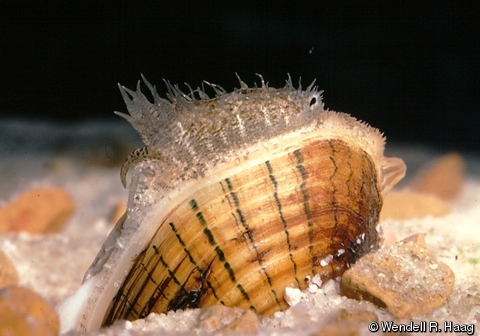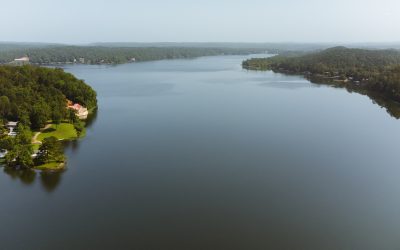Sewage plants in Alabama will now have to meet tighter limits for E. coli bacteria in order to make it safer to swim and fish in the state’s creeks thanks to changes in the state’s regulations pushed for by river conservation organizations. The new regulations lower the maximum concentration of E. coli that is allowed to be discharged at any given time during the summer by nearly 40%, and increase the period of time those standards apply by 50%, from four months to six months.
In 2015, the Black Warrior Riverkeeper, Choccolocco Creek Watershed Alliance, Choctawhatchee Riverkeeper, Coosa Riverkeeper, and Logan Martin Lake Protection Association pushed the Alabama Department of Environmental Management to increase the length of the legally defined summer recreation season to include May and October, which previously were considered part of the winter season when sewage plants are allowed to discharge higher levels of bacteria. The Environmental Management Commission, which governs the Department, adopted that suggestion into the regulations in December 2016. Additionally, the E. coli limit that applies during that summer season was lowered from 487 col/100mL to 298 col/100mL. The revised regulations went into effect on February 3, 2017.

Coosa Riverkeeper interns Kiana & Ania testing water quality in Snow Creek near Anniston’s sewage treatment plant.
In January, ADEM was in the process of renewing seven sewage plant permits, including Anniston’s Choccolocco Creek Plant, and posted those permits for public comment. Several river conservation groups submitted a letter to ADEM pointing out that those draft permits did not incorporate the new stricter limits that would be in effect by the time the permits were finalized and therefore had to be altered. ADEM swiftly corrected six of the seven permits before they were finalized, holding off on Anniston’s which is the largest of the bunch. The letter was submitted by Coosa Riverkeeper on behalf of themselves and the other seven Alabama members of the international Waterkeeper Alliance: Black Warrior Riverkeeper, Cahaba Riverkeeper, Choctawhatchee Riverkeeper, Hurricane Creekkeeper, Little River Waterkeeper, Mobile Baykeeper and Tennessee Riverkeeper.
Coosa Riverkeeper lodged additional comments about the Anniston sewage permit arguing that, in addition to the fact that the E. coli limits did not comply with the new regulations, the proposed increase in chlorine limits was unacceptable. ADEM pulled the Draft Permit, then issued a new Draft Permit for public comment in July that corrected the E. coli limits and reverted the chlorine limits back to previously used limits. Coosa Riverkeeper thanked ADEM and Anniston for making the changes, which are part of a larger puzzle of improving water quality on the creek.
“Lowering the concentration of bacteria in Choccolocco Creek is an important goal for Coosa Riverkeeper to ensure that the hundreds of people that swim in the creek every weekend are safe. Between our ongoing litigation against the Oxford sewage plant and the tightened permit limits at the Anniston sewage plant, we’re making real progress towards that end. When the Oxford sewage plant’s permit expires in 2018, they too will be subject to the stricter E. coli limits mandated by the updated regulations,” says Frank Chitwood, the Coosa Riverkeeper.
In addition to the seven permits that were part of the dispute in early 2017, all sewage plant permits will eventually incorporate these revised regulations as they come up for renewal over the next five years. That results in an important victory for conservationists whose mission is to ensure the state’s waters are clean and safe for use.

Coosa Riverkeeper intern Kayla collects a sample for Swim Guide in the popular Coldwater Creek in Oxford.
Strengthening bacteria regulations is one part of a broad effort by these river organizations to protect and inform Alabamians who swim, fish and boat on the state’s waterways. The same groups filing the letter in January, along with the Alabama Rivers Alliance, filed a petition for rulemaking with the Environmental Management Commission in March seeking to improve the minimum requirements imposed on sewage treatment facilities for public notification of sewage spills that could affect public health. Although the Commission denied the petition, they agreed to work towards that goal and ADEM has since unveiled the opt-in e-mail notification system that was asked for by the organizations. The Cahaba Riverkeeper, Choctawhatchee Riverkeeper, Coosa Riverkeeper, Little River Waterkeeper, and Mobile Baykeeper also regularly publish up-to-date water quality monitoring data to the Swim Guide in the summer, enabling the public to check on the most recent swimming conditions in their area before jumping in.
“No mother in Alabama should have to worry about her children going for a swim in the creek. The sad reality is that this is currently not the case and many of Alabama’s creeks are unsafe for swimming. We’ll continue to make use of a variety of tools and tactics to get closer to our vision of a swimmable, fishable Alabama and the progress we’ve made this year is very encouraging,” says Justinn Overton, the Executive Director of Coosa Riverkeeper.

Oxford’s Tull C Allen Sewage Plant discharge into Choccolocco Creek
The Waterkeeper Alliance members are also using litigation to address E. coli issues in Alabama’s waterways. Coosa Riverkeeper filed suit against the Oxford Water Works and Sewage Board in 2016 claiming excessive E. coli discharges into a section of Choccolocco Creek that is very popular for tubing and fishing. And just last week, Mobile Baykeeper filed a Notice of Intent to Sue Daphne Utilities for falsely reporting sewage spill data and failing to report sewages spills into D’Olive Creek. These are just two of the most recent in a lengthy history of legal action by Waterkeepers against sewage treatment plants that violate the Clean Water Act.



